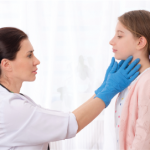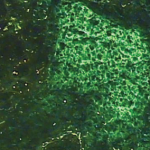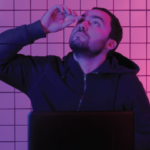Over the past decade, our understanding of diet and oral symptoms has evolved. Due to dryness, there is not only change in swallowing and taste, but also changes in the pattern of secreted salivary proteins (the saliva proteome).
Additionally, there is a significant change in the oral bacterial environment (the oral biomone) of the mouth. So in addition to the adverse role that sugars play in the acceleration of tooth decay, we now see objective changes in the mouth’s bacterial environment in combination with decreases in the normal mucosal defense barriers.
Most of these studies were published in the radiation therapy literature that we rarely read. Consequently, we will have to do our homework to understand how to repair the normal flora, decrease dental decay and increase the regrowth of “taste buds.”
We will also have to expand our understanding of the diurnal variations that lead to decreases in saliva production (as well as ocular tearing) at night, and to recognize the adverse effects of many other common medications (e.g., those for blood pressure, sleep) on these diurnal rhythms.
Many of these simple clinical hints are already known to radiation therapists and dental hygienists, but the limited time allocated at the rheumatology visit simply does not permit such patient education. This is a job for which Internet education and the multitude of SS-related patient support YouTube videos may play a significant role.
Diagnosis & Classification
Our sickest patients often are not seen in a rheumatology clinic or are mislabeled as SLE or RA. One trick question for rheumatologists is: “Does a positive SS-A antibody fulfill the criteria for SLE?” The majority will incorrectly answer “yes.”
When you expand the group to hematologists and then to orthopedic surgeons (a predominance of the world’s patients are cared for by “non-operative” orthopedists), the results become pretty close to random answers.
Systemic manifestations are diverse and may be misclassified as either RA or SLE.
In terms of systemic manifestations, our SS patients have a wide spectrum of them. The most common differential is between SLE, RA and scleroderma (and there also is often a great deal of overlap).
Given the considerable clinical and therapeutic overlap between SLE and SS, it’s useful to keep them as separate diagnostic concepts in order to maintain vigilance about the distinct ocular, oral and extraglandular manifestations pertaining to both. For example:
- I roughly think of SLE as an immune complex disorder and SS as an aggressive lymphocyte disorder.
- While the SLE patient has pleurisy, the SS patient has interstitial pneumonitis.
- While the SLE patient has glomerulonephritis, the SS patient has interstitial nephritis.
- The incidence of lymphoma, as well as parotid/submandibular swelling, is much higher in the SS patient.
When a patient has severe nephritis or pneumonitis or myelitis, no one really ever asks if they have dry mouth. The most important mistake made in the primary care clinic is that a “mandatory” ANA or RF is drawn as part of the work-up. When either comes back positive, the result will be labeled “consider SLE” (or “RA”) in the tiny footnote by the asterisk.


